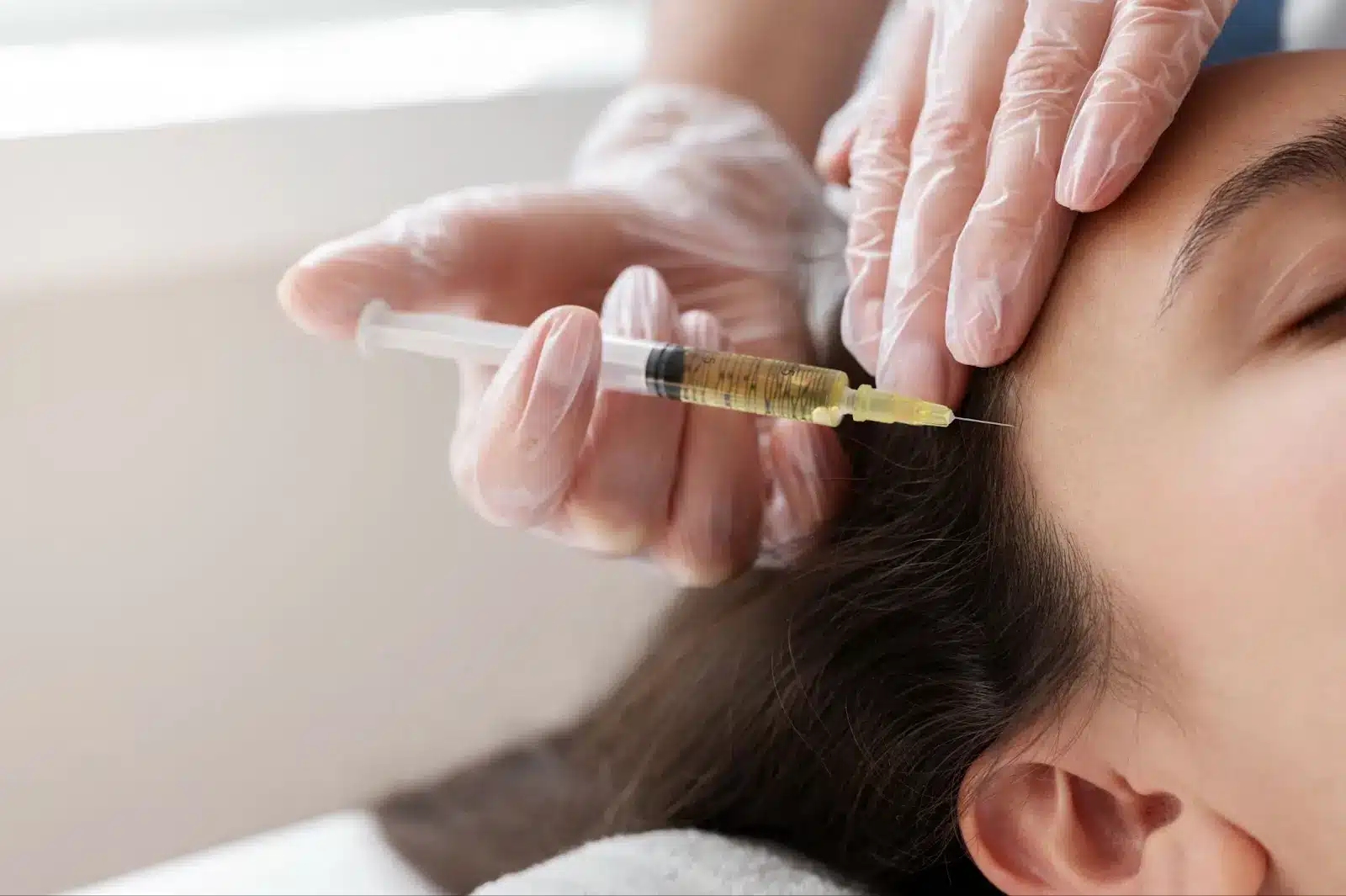
Botulinum toxins vary in characteristics such as protein composition, potency, and diffusion rates, which can affect their clinical applications and patient outcomes. According to a review, these differences influence both the efficacy and safety profiles of the products, making the choice of toxin necessary for tailored treatments.
Meditoxin and Nabota are two leading brands of botulinum toxin that have gained popularity worldwide. Both offer effective wrinkle reduction and muscle relaxation; yet, subtle distinctions in formulation and usage set them apart, influencing practitioner preference and patient results.
In this article, we will compare Meditoxin and Nabota, exploring their properties, effectiveness, and safety to help you understand which may be the better option for your needs.
Key Takeaways
- Meditoxin and Nabota are both effective botulinum toxin type A products used for aesthetic and therapeutic treatments, offering similar results in wrinkle reduction and muscle relaxation.
- Meditoxin has a purified formulation without human serum albumin, which may reduce the risk of allergic reactions and offer a more precise diffusion profile for localized treatments, especially in delicate areas like crow’s feet or glabellar lines.
- Nabota contains accessory proteins that help stabilize the toxin complex, but this can lead to a slightly wider diffusion range, requiring more precise injection techniques to prevent unwanted spread to adjacent muscles.
- Both products typically last between 3 to 6 months, with some users reporting extended effects from Meditoxin (up to 8 to 12 months) with consistent use.
- Meditoxin is often preferred for its ease of reconstitution, which allows for more accurate dosing and a smoother preparation process compared to Nabota.
- Nabota enjoys a significant market presence, particularly under the Jeuveau brand in Western countries, and offers competitive pricing in markets such as the U.S. and Europe.
- When it comes to price, Meditoxin is more cost-effective, particularly in Asia and emerging markets, making it an attractive option for clinics seeking affordable treatments without compromising quality.
- Both products require refrigeration for storage and should be used within 24 hours of reconstitution to maintain potency and minimize the risk of contamination.
- Clinical outcomes from both Meditoxin and Nabota have shown minimal side effects, including injection site bruising and temporary ptosis, with both products offering high patient satisfaction rates.
- The choice between Meditoxin and Nabota often depends on factors such as patient needs, clinician preference, cost, and clinical experience.
About: Doctor Medica is your trusted supplier of top-quality dermal fillers, viscosupplements, and more for your medical practice. We offer genuine products from leading brands at the lowest prices in the market. If you’re looking to order Meditoxin online for your practice, contact Doctor Medica today.
Meditoxin vs Nabota: Active Ingredients & Mechanism of Action

When it comes to cosmetic and therapeutic treatments involving botulinum toxin type A, Meditoxin and Nabota stand out as popular choices, particularly in the Asian and global markets. Both products harness the neurotoxin’s powerful ability to relax muscles, reducing wrinkles and treating conditions like muscle spasticity. Understanding their similarities and subtle differences can help practitioners and patients choose the most suitable option.
- Meditoxin: Contains a purified 900 kDa neurotoxin complex formulated without human serum albumin. This absence of human proteins may lower the risk of immune reactions and increase tolerance in sensitive patients. Its gelatin-based buffer aims to maintain stability and reduce allergic responses.
- Nabota (also known as Jeuveau in the U.S.): Utilizes botulinum toxin type A but includes accessory proteins that help stabilize the neurotoxin complex during storage and administration. These complexing proteins may affect diffusion and the duration of the effect.
Despite these differences in complexing proteins and formulation, both toxins work by blocking acetylcholine release at neuromuscular junctions. This action temporarily paralyzes targeted muscles, leading to wrinkle softening and therapeutic muscle relaxation. The fundamental mechanism remains consistent across both products.
Meditoxin vs Nabota: Purification Process & Diffusion Characteristics

When comparing botulinum toxin products, understanding their purification methods and diffusion characteristics is crucial because these factors directly influence clinical effectiveness and safety. Below is a detailed comparison of Meditoxin and Nabota based on their purification processes and diffusion characteristics.
Purification Process
- Meditoxin undergoes a rigorous purification process resulting in a gelatin-based buffer formulation that does not contain human serum albumin. This formulation reduces the risk of allergic reactions and supports the stability of the product.
- Nabota contains accessory proteins that help stabilize the neurotoxin complex, which can improve stability but may introduce additional proteins. These proteins might affect how the toxin behaves during injection and could influence diffusion.
Diffusion Profile
- Meditoxin has a lower diffusion coefficient (~0.23 cm²/day), meaning it spreads more precisely and allows for more localized muscle targeting. This can be beneficial in areas like the glabellar lines or crow’s feet, where precision is key.
- On the other hand, Nabota has a slightly wider diffusion profile, which could increase the risk of the toxin spreading to nearby muscles if not injected properly, especially in delicate areas like around the eyes.
Clinical Impact
- Meditoxin’s precise diffusion benefits clinicians who want to target specific muscles without affecting surrounding areas. It helps to minimize side effects like ptosis or muscle weakness in nearby regions.
- Nabota, while effective, requires a more careful injection technique to avoid unwanted spread of the toxin, especially near sensitive zones.
Meditoxin vs Nabota: Clinical Outcomes & Practitioner Feedback
Both Meditoxin and Nabota offer effective treatments for wrinkle reduction and muscle relaxation. However, there are subtle differences in clinical outcomes and how practitioners experience using them.
Onset and Duration
- Both products generally show visible effects within 3 to 7 days after injection.
- The effects of both last about 3 to 6 months, but some Meditoxin users report extended results of 8 to 12 months, especially with consistent use.
Side Effects
- The most common side effects for both products include injection site bruising, localized swelling, and transitory eyelid ptosis (which occurs infrequently and resolves quickly).
- Both Meditoxin and Nabota have excellent safety records, with minimal adverse effects in clinical trials and real-world use.
Practitioner Insights
- Many clinicians appreciate Meditoxin due to its easier dilution and reconstitution, which allows for greater dosing accuracy.
- Nabota is favored for its robust clinical data and well-established presence in Western markets, especially under the Jeuveau brand.
Patient Satisfaction
- Both products provide high patient satisfaction due to their efficacy in reducing wrinkles and relaxing muscles.
- Some slight differences in onset speed, handling, and duration may influence recommendations, but both are reliable options for wrinkle treatments.
Additionally, when comparing Meditoxin vs Botox, Meditoxin’s formulation may offer some advantages in terms of purity and diffusion control, making it an attractive option for patients with specific concerns about protein sensitivities or treatment precision. However, Botox, with its long-standing market presence, is often favored for its established track record in clinical settings.
Meditoxin vs Nabota: Logistics (Price, Shelf Life, Unit Equivalency, Availability)
Choosing the right botulinum toxin product involves more than just efficacy and safety. Logistical factors such as price, shelf life, unit equivalency, and market availability greatly influence clinical decisions and patient access. When comparing options, understanding these practical elements is as essential as knowing clinical differences.
- Price: Meditoxin generally offers a more cost-effective solution, particularly in Asian countries and emerging markets, making it a popular choice for clinics seeking affordability without compromising quality. Nabota, meanwhile, is competitively priced in the U.S. and European markets, appealing to those who prioritize accessibility and a strong brand presence.
- Shelf Life: Both Meditoxin and Nabota require refrigeration between 2 and 8°C, maintaining stability for up to 24 months when unopened. Once reconstituted, these toxins should ideally be used within 24 hours to preserve potency and reduce contamination risks. Proper storage practices are crucial for ensuring the efficacy of treatment.
- Unit Equivalency: While no formal conversion ratio exists, clinical experience suggests that 1 unit of Meditoxin roughly corresponds to 1 unit of Nabota. However, slight variations in patient response and injection technique may influence dosing adjustments. Understanding this approximate equivalence helps practitioners transition or compare products.
- Availability: Nabota, marketed as Jeuveau in the U.S., has a significant presence in Western markets, including Korea and Europe. Meditoxin, initially dominant in Asia, is expanding internationally, offering practitioners and patients increased access to alternative botulinum toxin options.
Conclusion
Meditoxin and Nabota offer effective and safe botulinum toxin treatments, differing primarily in formulation and logistical aspects. Meditoxin appeals with its reduced immunogenicity and precise diffusion, making it a strong choice for clinicians prioritizing finesse. Nabota benefits from extensive clinical data and branding in Western markets.
Ultimately, the decision depends on the practitioner’s experience, the patient’s needs, and cost-effectiveness.
FAQs
1. Are Meditoxin and Nabota interchangeable?
While both toxins are botulinum toxin type A products, dosing and diffusion differences mean they are not perfectly interchangeable. Clinicians tailor treatment protocols accordingly.
2. How do Meditoxin and Nabota compare to Botox?
Both are effective alternatives with similar efficacy and safety profiles, but may differ in terms of diffusion and ease of reconstitution.
3. What side effects should patients expect?
Mild injection site bruising, swelling, and transient muscle weakness are common, with serious adverse events being rare for both products.
4. How should these products be stored?
Both require refrigeration at 2-8°C and should be used promptly after reconstitution to maintain potency and safety.
References
Brodsky MA, Swope DM, Grimes D. Diffusion of botulinum toxins. Tremor Other Hyperkinet Mov (N Y). 2012;2:tre-02-85-417-1. doi:10.7916/D88W3C1M
Ayoub N. Botulinum toxin therapy: a comprehensive review on clinical and pharmacological insights. J Clin Med. 2025;14(6):2021. doi:10.3390/jcm14062021.
Hasan F. Manufacturing and clinical formulations of botulinum neurotoxins. In: Handbook of Experimental Pharmacology. ; 2019:49-62. doi:10.1007/164_2019_311
Related Articles
Joanna Carr
Orencia vs Cimzia – A Comparison of Two Biologic Therapies
Compare Orencia and Cimzia, two biologic therapies used to treat autoimmune diseases. Understand their mechanisms, benefits, side effects, and find ou...
Joanna Carr
Does Nexplanon Cause Weight Gain? – Investigating Potential Side Effects
Explore whether Nexplanon causes weight gain by investigating its potential side effects. Understand the factors influencing weight changes and make i...
Joanna Carr
Xeomin Pros and Cons: About the Treatment
Xeomin (incobotulinumtoxinA) is a highly purified form of botulinum toxin type A, free from complexing proteins. Read more here.


